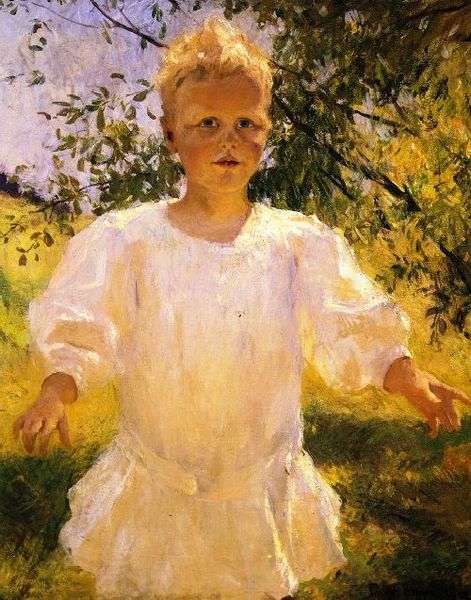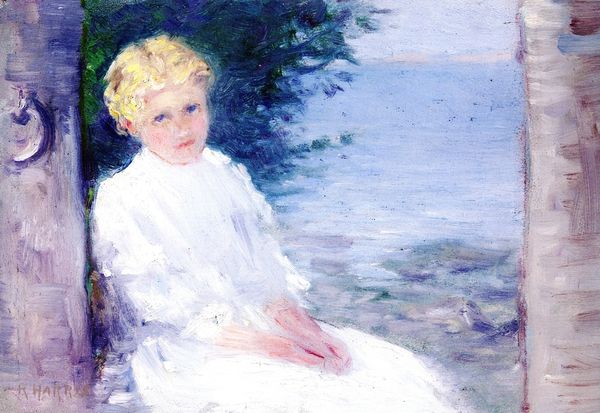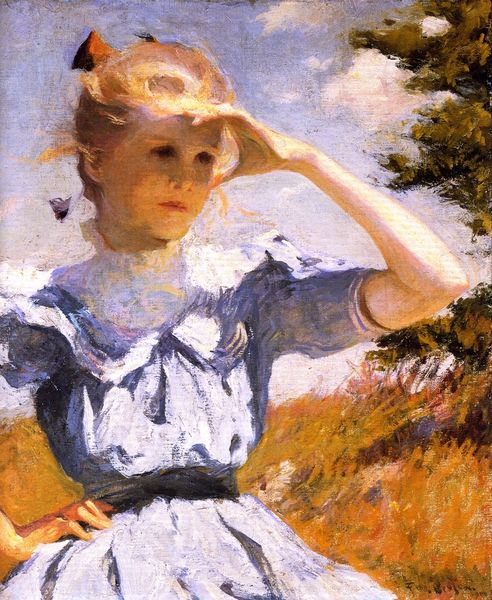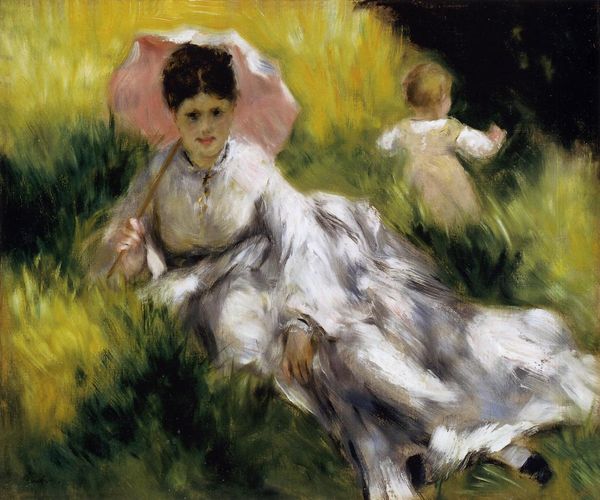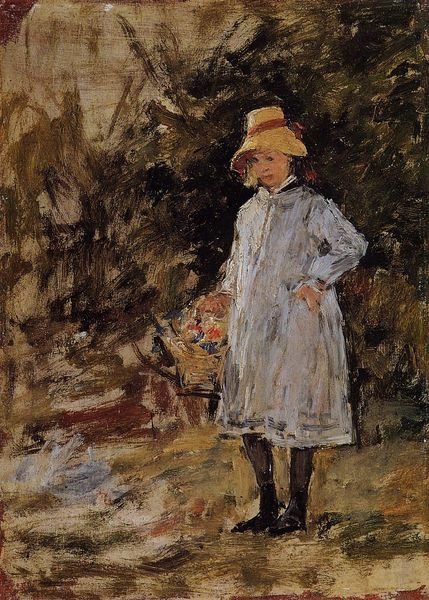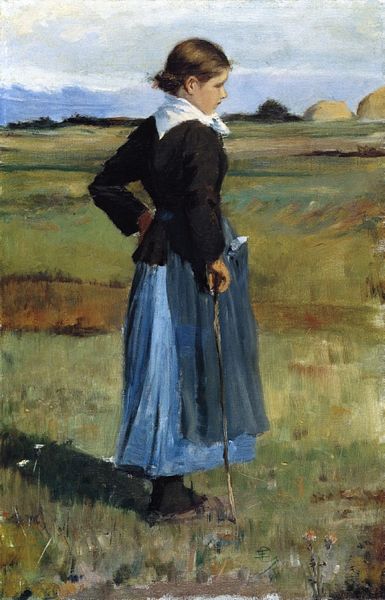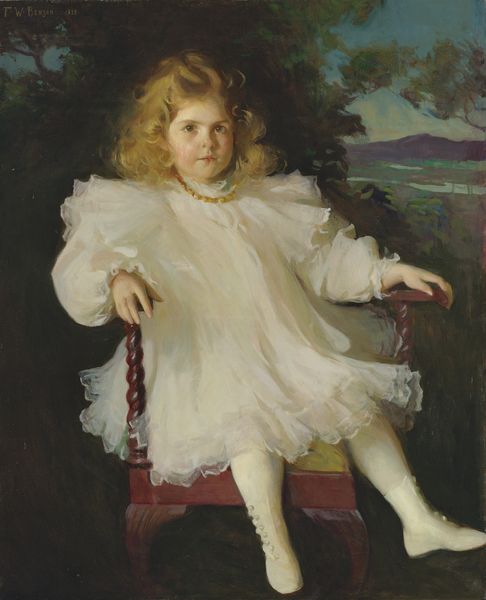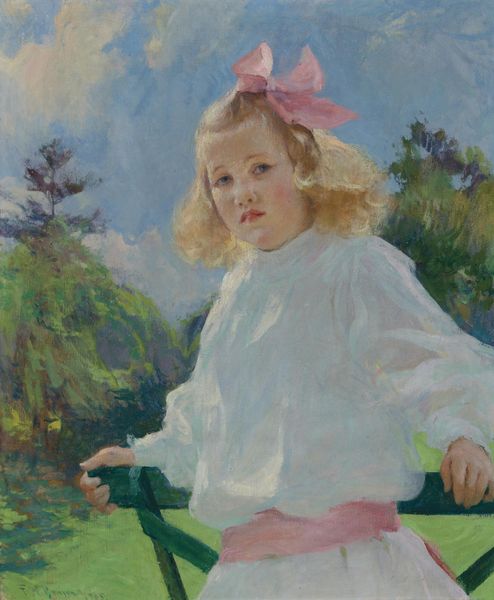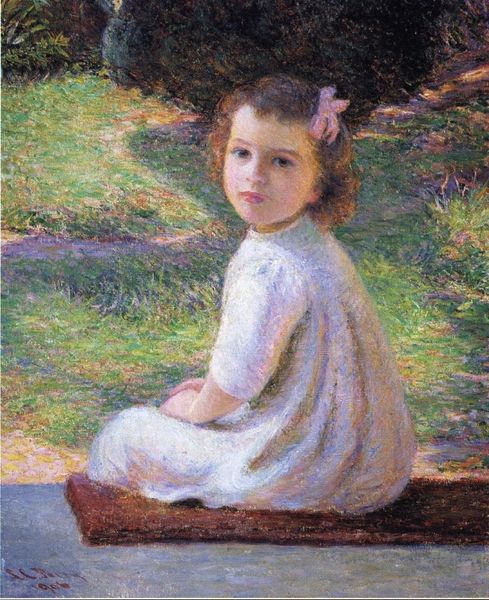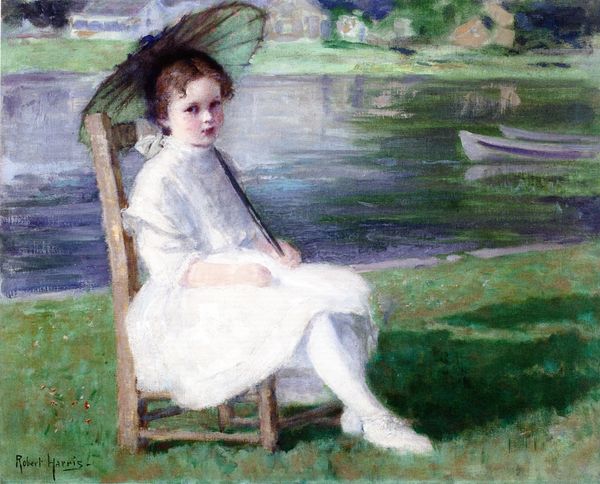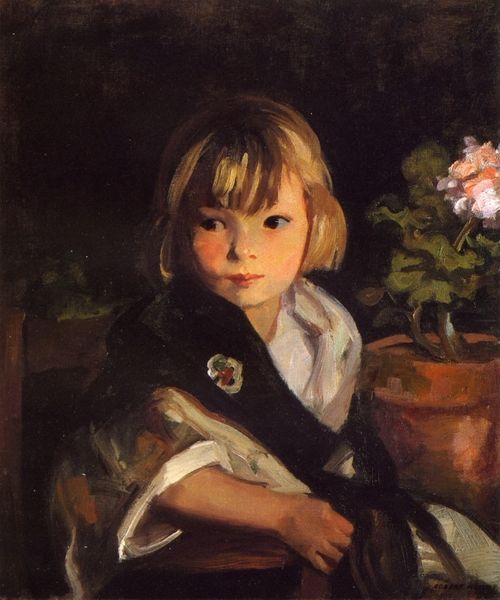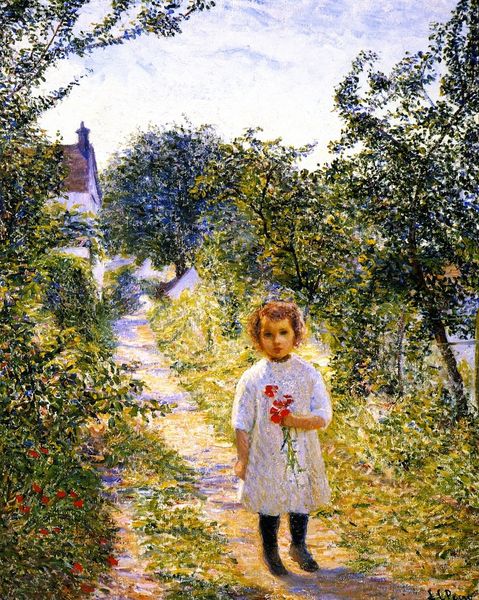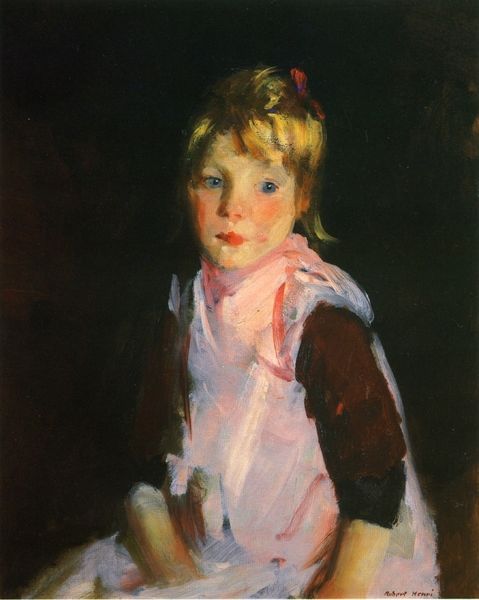
Copyright: Public domain
Curator: This is "Child in Sunlight," an 1899 oil painting by Frank W. Benson. He appears to have embraced the plein-air technique. Editor: What strikes me first is how that pure white dress glows against the earth tones. It feels almost angelic, contrasting with the ordinary seaside scene. Curator: Indeed. Benson was deeply engaged in representing leisure and family life of the upper-middle class. You can sense that in the materiality here: the choice of oil paints, which, even though applied with thick impasto, allow for this capturing of light and evoke summer textures and open-air existence. It’s a kind of material translation of their lifestyle. Editor: I find the details intriguing; the child, frontally positioned, feels like an emblem of innocence against the hazy marine backdrop. There's the sailboat hinting at journeys, the jetty with the little boat representing stability perhaps? It's not just a portrait, but a whole tableau of associated values. Curator: Good point. Also, if we consider Benson’s work within the larger production contexts of the time, you start thinking about the textile mills and the construction of childhood itself, how white dresses signify class, status and privilege and so much labour for servants that remained conveniently invisible. Editor: Certainly, the colour white traditionally suggests purity and innocence. Yet, in the painting's hazy atmosphere, those clear associations blur – hinting at the fleeting, transient nature of childhood itself. Curator: Yes, but beyond innocence, it is interesting to see that the scene emphasizes leisure –an industrial system afforded them these relaxing sunny days for seaside walks in pretty clothes – this connection to industry, manufacture, consumption… Editor: I see your point. While you're tracing the origins, I'm left with the visual impression of an innocent gaze amidst symbols that seem ripe with meaning. The painting, on a simple surface level, presents so many intertwined, yet discreet narratives. Curator: Precisely. It is not enough to interpret an art piece at face value alone, considering its material composition is necessary for a broader understanding of its time. Editor: Thank you, that expanded my thinking and encouraged new interpretation. Curator: And thank you – I'm taking away with me how one scene encapsulates values through striking and emotive image construction.
Comments
No comments
Be the first to comment and join the conversation on the ultimate creative platform.
